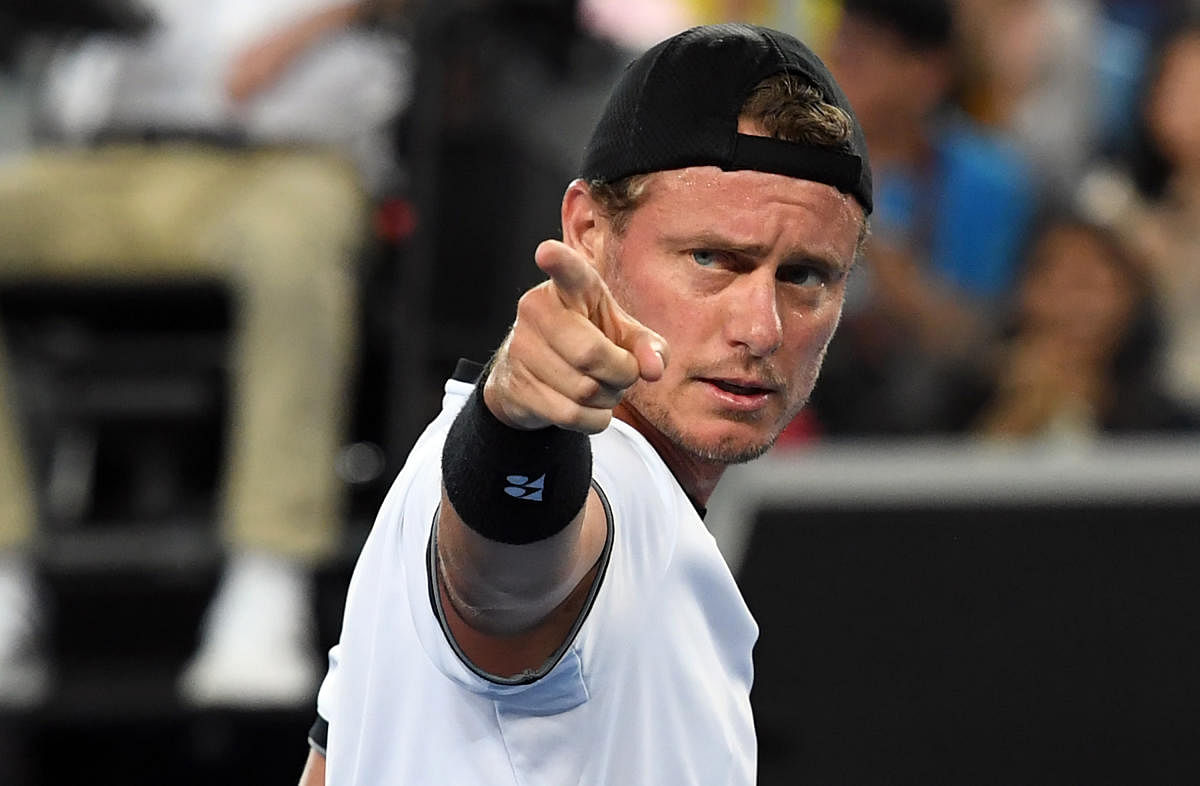
First, a confession: I still wear my cap backward when I play tennis, even at a certain age.
So I come subjectively to this subject as I note that many years after the Swedish pro Mikael Pernfors inspired some of my generation of hackers to reverse our caps, and years after Australia's Lleyton Hewitt made it definitively a thing in tennis, members of the new wave have acquired the taste, too.
They include the American Jack Sock, Lucas Pouille of France, Karen Khachanov of Russia and the flashy Canadian teenager Denis Shapovalov.
It has never been an entirely logical choice.
The point of a cap in tennis is, first and foremost, to keep the sun out of your eyes - the sort of sun that has been beating down on the players all week at this torrid Australian Open.
But the only way to keep the sun off your face is if the bill of the cap is facing the traditional direction.
"Backwards makes absolutely zero sense," said Brad Gilbert, an ESPN analyst and a longtime coach.
And yet Hewitt's sartorial legacy seems safe and sound, even if it once appeared that the backward cap might go the way of the wooden racket in tennis when he finally faded from the scene.
Hewitt, 36, is not gone quite yet. After retiring at the Australian Open in 2016, he keeps coming back for cameos and is playing doubles in Melbourne with his good friend Sam Groth for Groth's farewell tournament.
Guess which direction their caps were pointing when they won their first-round match last Thursday?
Hewitt has been wearing his that way since the beginning. Darren Cahill, who is also from Adelaide, Australia, remembers getting a call from Hewitt's parents about the possibility of coaching him and then getting a knock on his door.
It was Hewitt, age 12, with his cap on backward.
"The first conversation with him, I asked, 'Why?'" Cahill said.
"And he said, 'I just like it backwards.' And I said, 'Aren't you supposed to wear the peak of the cap to protect your nose and eyes and keep your eyes out of the sun?,' and he said, 'No, I just like it backwards.'
"And so I said, 'All right.' That was honestly the first time I'd ever seen it, and I think it was like a 10-second conversation, and I never asked him again. I think he wore that same cap for about three years straight."
Hewitt went on to beat Pete Sampras in a backward cap to win his first major title at the 2001 US Open, and though there were some notable bareheaded moments, including the Wimbledon final he won in 2002, the look was and remains his signature.
The younger set noticed.
"I started wearing a cap backwards just because I thought it was cool, to be honest," said Nick Kyrgios, the new and more unpredictable Australian No 1. "Just wearing that cap backwards meant that sort of grinding mentality. Lleyton sort of made that his own sort of thing."
Beyond tennis, the backward cap has a long history and the look is now ubiquitous: Barack Obama wears his cap backward on vacation, Paul Ryan in the weight room. But in tennis at least, the time for resistance has seemingly passed.
On court, the backward cap is indeed a grinder thing, a dig-in-and-do-whatever-it- takes-to-win the-marathon-point thing.
It might not keep the sun out of our eyes, but it can still keep some of the sweat out of our eyes. And once you get used to wearing one, it is also a security blanket in a sport where habits - good, bad or otherwise - can be hard to break.
"I've been wearing my cap backwards for about five or six years now," said Maximilian Marterer, a 22-year-old German who qualified for the Australian Open. "I did it at first because I had long hair, and I wanted to keep it in place. But I cut it, and I don't really need it anymore. It's confidence, so I'm keeping it."
Rafael Nadal, arranger of beverage bottles and adjuster of shorts, knows this all too well.
The French veterans Adrian Mannarino and Richard Gasquet also have been wearing their caps backward - a now-unusual move for Gasquet, who was once urged to ditch the style by a leading French tennis writer who saw it as a sign of his inability to grow up (or intimidate his opponents).
"Who is afraid of a backwards cap and the childlike silhouette it creates?" Philippe Bouin wrote in L'Equipe 2007.
"Come on!" Hewitt might have barked in response.
Some have definitively moved on, though.
It is largely forgotten that Federer, the balletic antithesis of the grinder, wore his cap backward for much of the match when he made his Grand Slam debut at the French Open in 1999 at age 17, losing in the first round to the Australian star Patrick Rafter.
He soon switched to bandannas and started reserving the reversed cap for practice sessions, just like his longtime rival Rafael Nadal, even if Nadal seems much more of a natural for the get-down-to-business look.
Very few women have joined in: Eleni Daniilidou of Greece and Akgul Amanmuradova of Uzbekistan on occasion; Martina Navratilova in the very late phases of her long career.
But then few women wear caps at all on court. Even in the Australian heat, most opted for visors this week.
Daria Kasatkina, the rising Russian, says it is a ponytail problem: Put the hat backward and the ponytail rides too low.
Lucie Safarova, the Czech tennis star, thinks "women probably want to look more feminine with the visor, and the backwards look is more masculine."
Tastes and perceptions change, however, and as Hewitt exits and the Socks and Shapovalovs and the rest of us carry on, who knows who will be inspired next?
Deccan Herald is on WhatsApp Channels| Join now for Breaking News & Editor's Picks